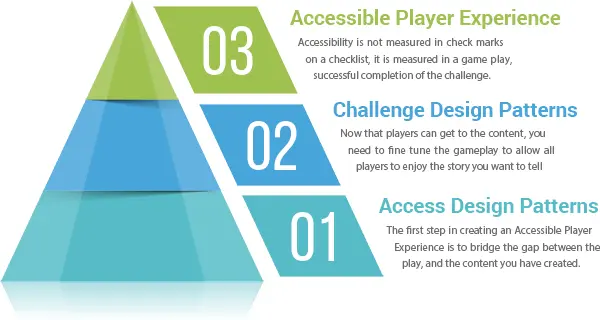Access Patterns

One of the simplest descriptions of a game is a feedback loop between the player and the game world. The player takes actions in the game which cause the game world to change and the game gives feedback to the player about the new state of the game world. Access patterns are ones that support designing so that players can get into this feedback loop. A mismatch between player ability and game design can prevent a player from entering the loop either because they cannot take actions or cannot receive the feedback.
For example, a player with a physical disability in their hands may be unable to use a standard double joystick setup on a controller or use many different buttons simultaneously. They may even have trouble gripping larger controllers like the Nintendo Switch when the JoyPads are attached to the Switch itself. Such a player may need a different controller. That option can be allowed by developers through the Flexible Controllers pattern. They may need to remap the controls as illustrated in the Same Controls But Different pattern, so that they can configure which buttons take which actions.
In terms of getting feedback, think about a first-person shooter where the player has to cross an area where an all-out gunfight is raging. If that player has a hearing disability, they might have no idea what they’re about to stumble into if the gunfire is only conveyed through audio. What is needed is a Second Channel that allows them to receive the feedback that they are getting closer to gunfire, for example, through an increasing “buzz” in the haptics of the controller.
By thinking about the Access Patterns, you can ideate new and innovative designs for getting players different disabilities acting into the feedback loop of your game, or as we more commonly call it, playing the game.
